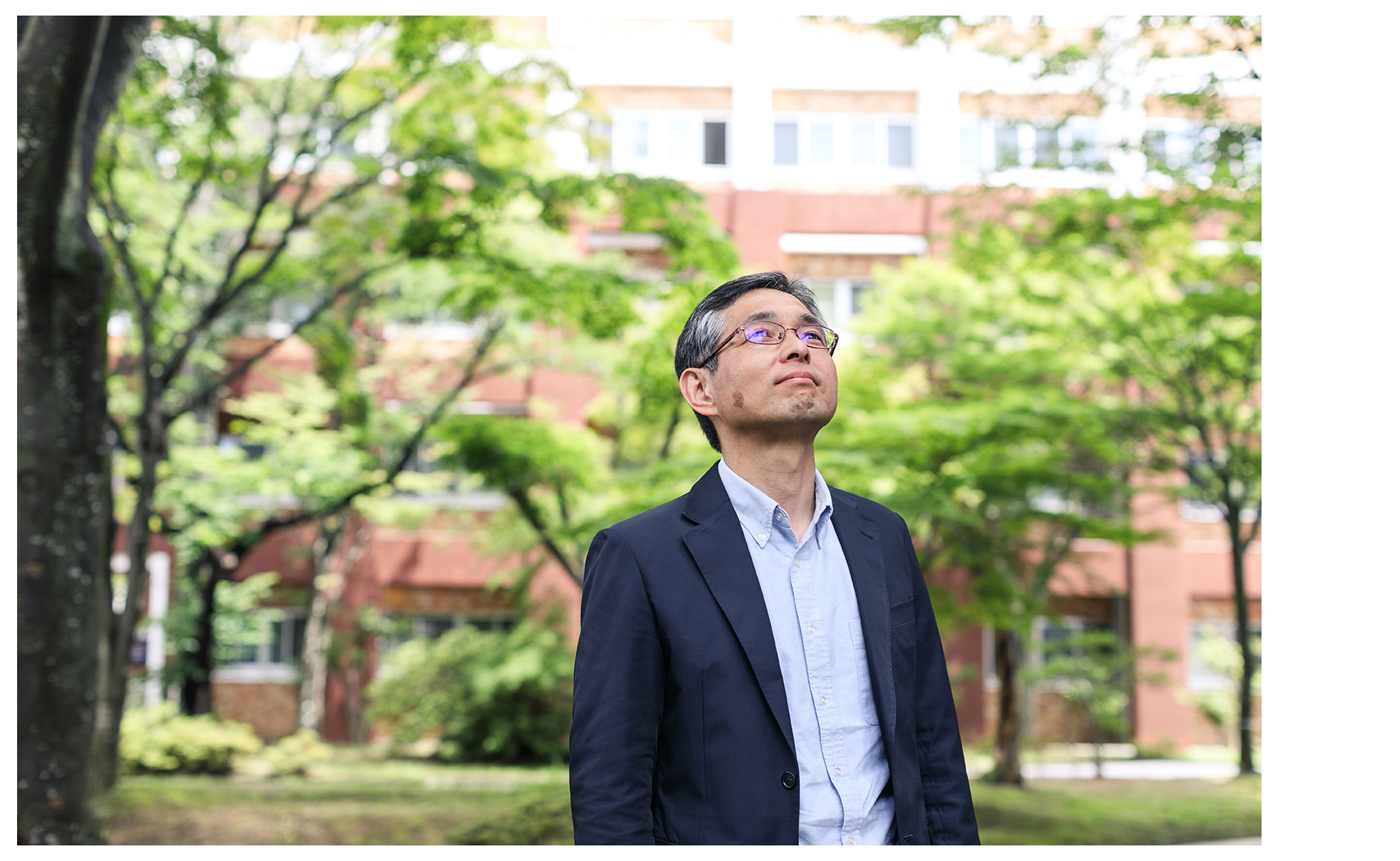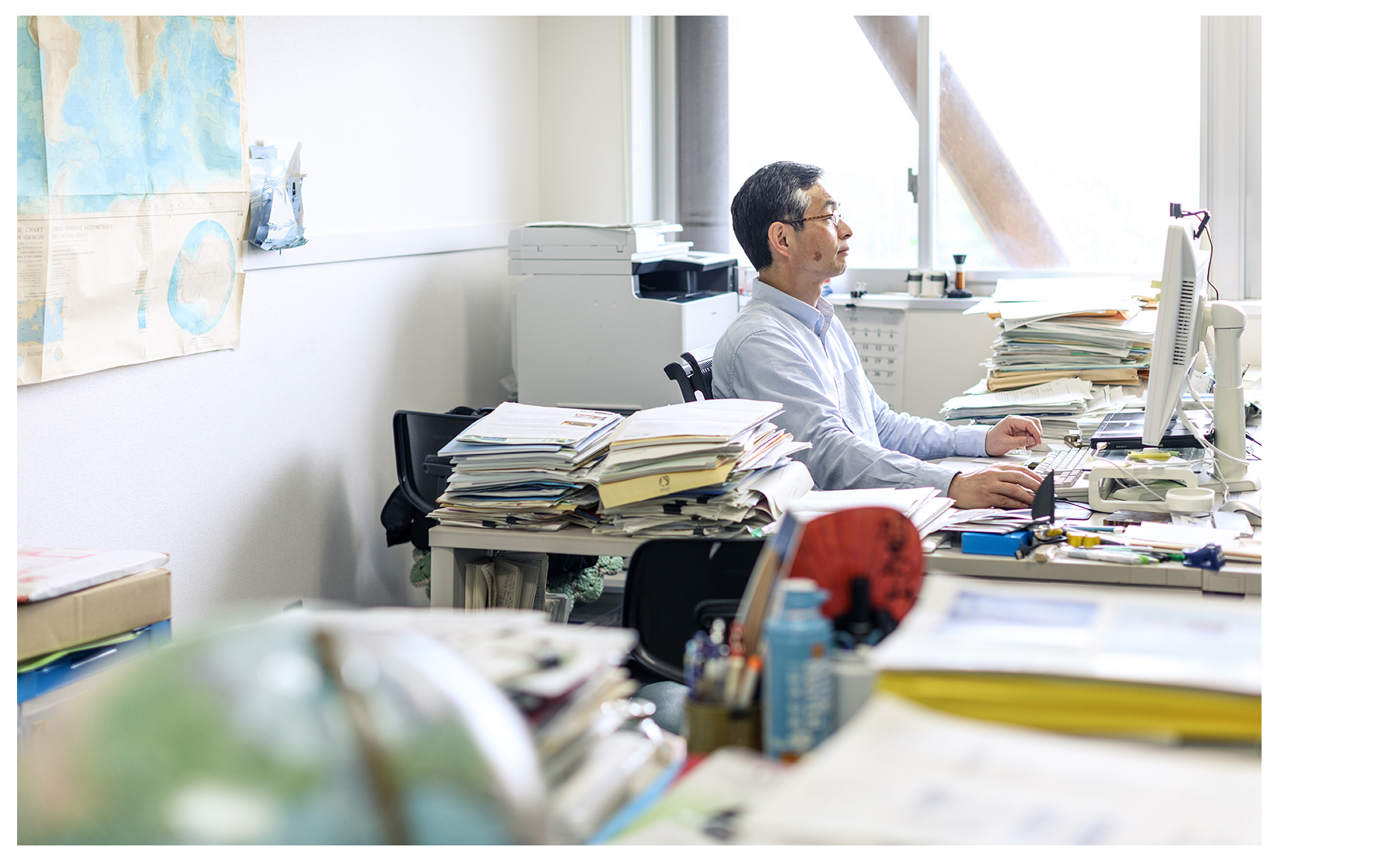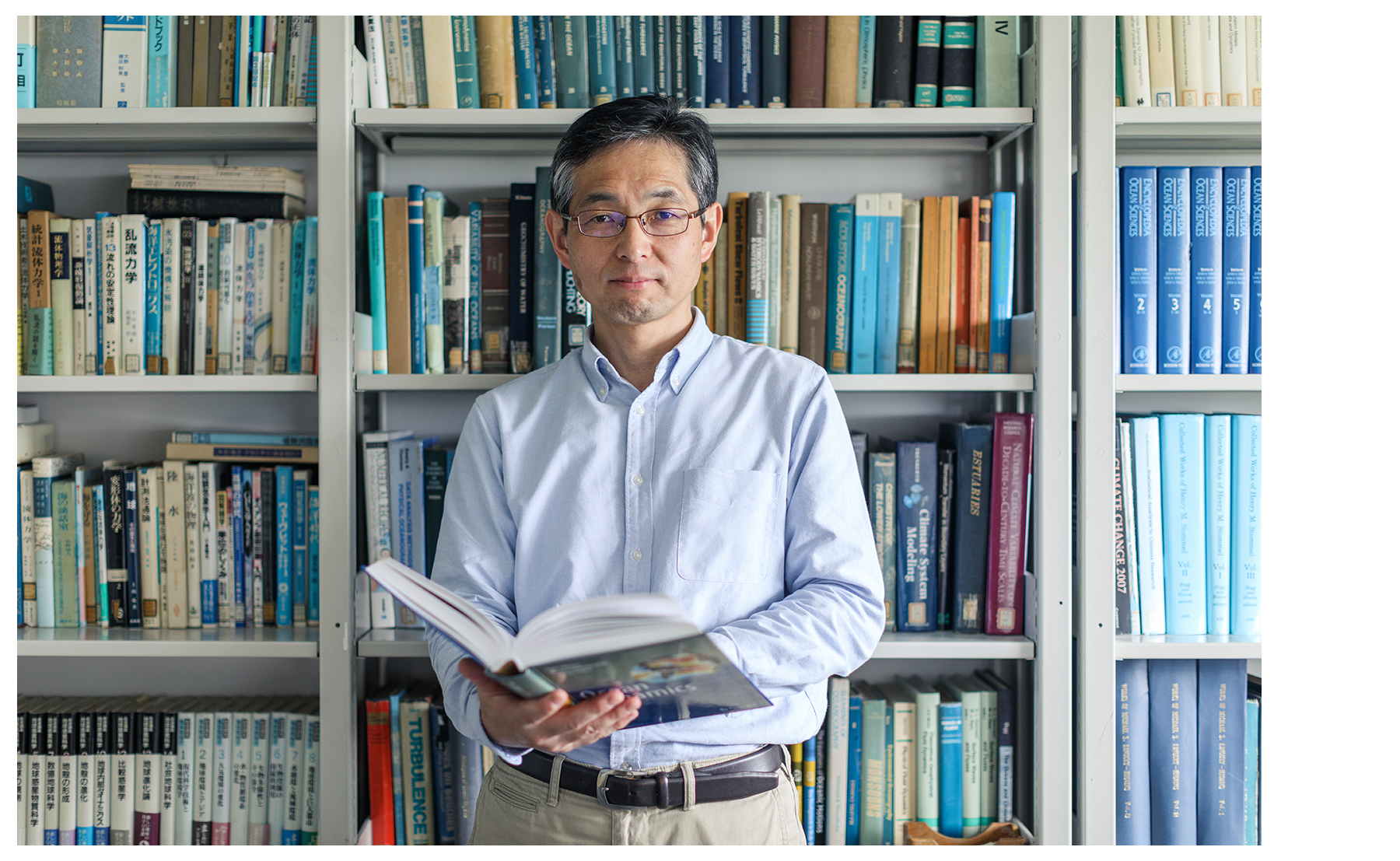My research topics are summarized as ventilation of the ocean. The ocean ventilation means that the water below the sea surface is replaced by the water in contact with the atmosphere at the sea surface. In spite of original meaning of “ventilation,” the ocean ventilation means not only the provision of oxygen and other gases to the ocean below the surface but also the provision of heat and other substances to the subsurface layer. That is, anomalies of temperature, salinity and other water properties generated at the sea surface as a result of their ocean-atmosphere exchanges are carried into the ocean below the surface by the ocean ventilation processes. The ocean ventilation connects the sea surface and the ocean interior and maintains distribution of temperature and other water properties in the ocean.
According to firm scientific assessment, enormous amount of heat has been accumulated on the earth over the past 40 years due to global warming, which is equivalent to more than 200,000 times the annual power generation of one nuclear power plant per year; more than 90% of this heat has been stored in the ocean. Understanding of the ocean ventilation is essential to elucidate the mechanism of heat accumulation in the ocean and is indispensable for reliable future projections of global warming. The ocean ventilation also needs to be well understood in order to elucidate and predict ocean changes that have major impacts on marine ecosystems, such as the ocean acidification and deoxygenation associated with global warming.
Under this background, we are conducting research concerning the ocean ventilation and its variability. Our main targets are ventilation processes in the upper ocean down to several hundred meters deep and on time scales from intra-season to several decades. We analyze both in-situ and satellite observation data and outputs of ocean general circulation models that reproduce the ocean circulation/environment using computers. A major features of our research is full use of the data from Argo. Argo is an epoch-making international ocean observing network that covers the global ocean with nearly 4,000 profiling floats (autonomous observing robots), and acquires temperature and salinity data from the sea surface to 2000 m in near real time. All the Argo data are freely available through the Internet. In addition to temperature and salinity, we are planning to extend the measurement to biogeochemical properties such as oxygen, nutrients and acidity, and to extend the observation depth to the ocean bottom. I have been participating in the international Argo program from the beginning and actively using its data. However, since information contained in the Argo data is enormous, it is not still fully utilized for elucidating how the ocean properties are maintained and how they change. In order to bring a breakthrough, new ideas are indispensable. We are looking forward to active participation of young people including graduate students in this field.





